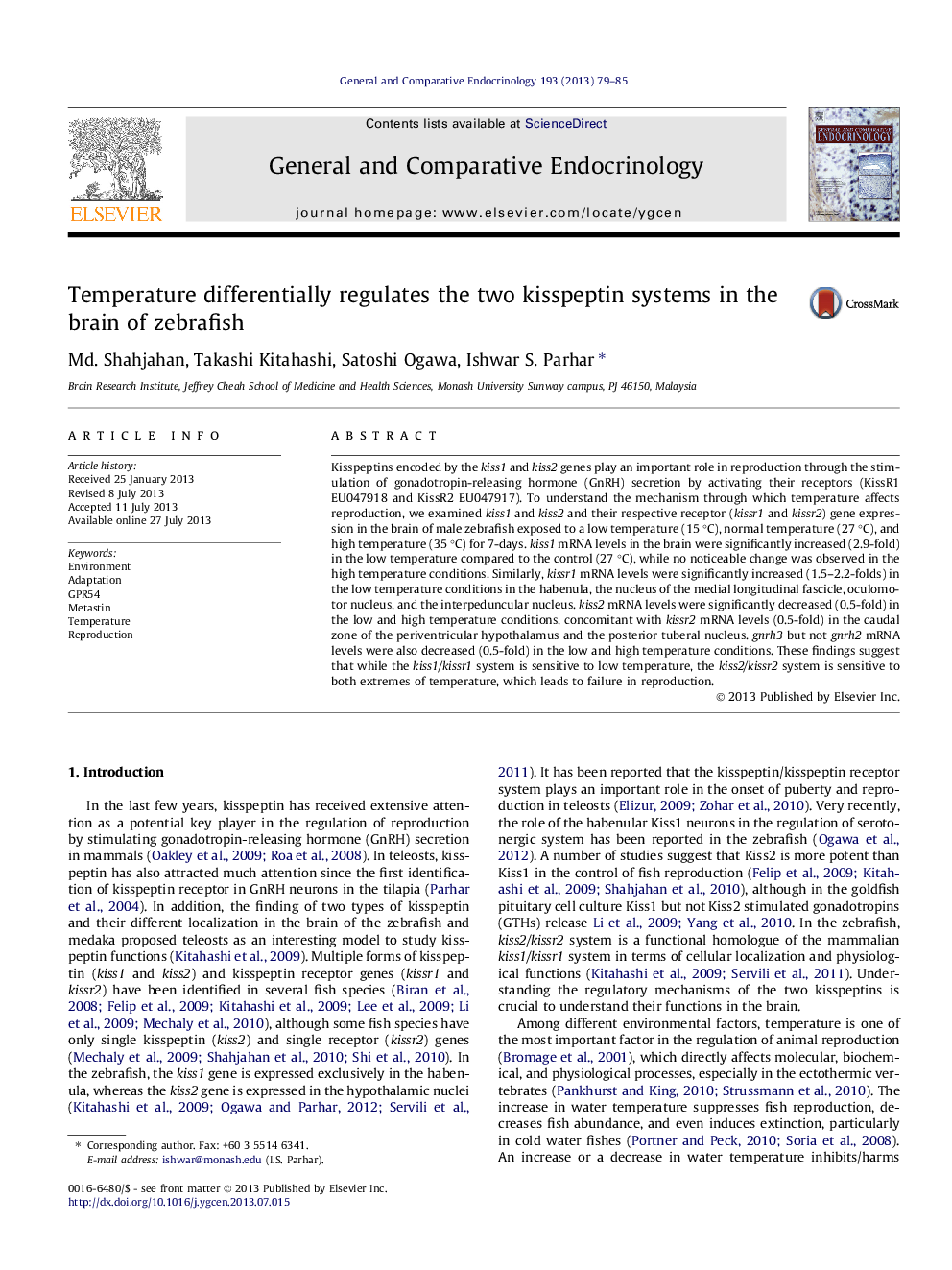| کد مقاله | کد نشریه | سال انتشار | مقاله انگلیسی | نسخه تمام متن |
|---|---|---|---|---|
| 2800270 | 1568912 | 2013 | 7 صفحه PDF | دانلود رایگان |

• Investigated the effects of temperature on kiss1/2 expression in the zebrafish brain.
• Low temperature activates the kiss1/kissr1 system.
• Low and high temperatures suppress the kiss2/kissr2 system.
• Low and high temperatures also suppress the hypophysiotropic form gnrh3.
• Kiss1 and Kiss2 mediate different aspects of temperature effects on fish physiology.
Kisspeptins encoded by the kiss1 and kiss2 genes play an important role in reproduction through the stimulation of gonadotropin-releasing hormone (GnRH) secretion by activating their receptors (KissR1 EU047918 and KissR2 EU047917). To understand the mechanism through which temperature affects reproduction, we examined kiss1 and kiss2 and their respective receptor (kissr1 and kissr2) gene expression in the brain of male zebrafish exposed to a low temperature (15 °C), normal temperature (27 °C), and high temperature (35 °C) for 7-days. kiss1 mRNA levels in the brain were significantly increased (2.9-fold) in the low temperature compared to the control (27 °C), while no noticeable change was observed in the high temperature conditions. Similarly, kissr1 mRNA levels were significantly increased (1.5–2.2-folds) in the low temperature conditions in the habenula, the nucleus of the medial longitudinal fascicle, oculomotor nucleus, and the interpeduncular nucleus. kiss2 mRNA levels were significantly decreased (0.5-fold) in the low and high temperature conditions, concomitant with kissr2 mRNA levels (0.5-fold) in the caudal zone of the periventricular hypothalamus and the posterior tuberal nucleus. gnrh3 but not gnrh2 mRNA levels were also decreased (0.5-fold) in the low and high temperature conditions. These findings suggest that while the kiss1/kissr1 system is sensitive to low temperature, the kiss2/kissr2 system is sensitive to both extremes of temperature, which leads to failure in reproduction.
Journal: General and Comparative Endocrinology - Volume 193, 1 November 2013, Pages 79–85